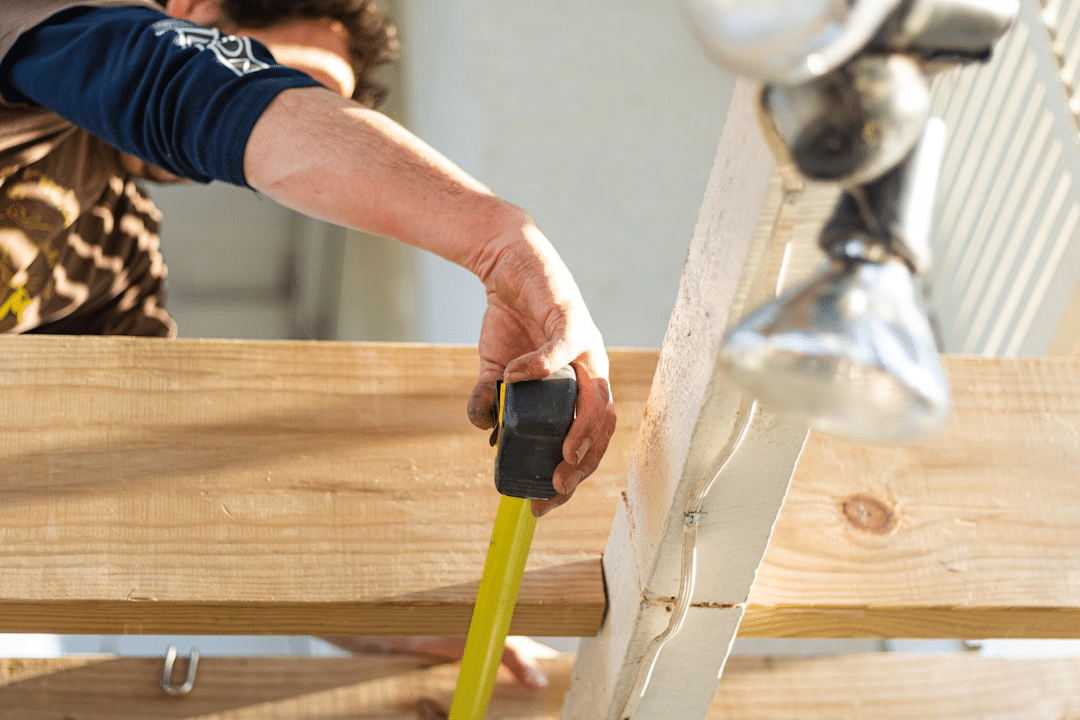5 Things to Check Before Starting a Home Extension
Planning a home extension can be incredibly exciting. Just imagine flooding your kitchen with natural light, finally adding that dreamy walk-in wardrobe, or creating the perfect work-from-home nook with a garden view. Expanding your space is a chance to shape your home around how you really live, bringing new life to rooms that may have started to feel a little outdated.
The possibilities feel endless, whether you’re building up, out, or simply reconfiguring your layout. But before the building begins, it’s important to lay the groundwork properly. Extensions often come with hidden complexities, and skipping over the early checks can lead to budget issues, delays, or even planning problems down the line.
Here are five key things to check before you get started:
1. Is Planning Permission Required?
We all love those Pinterest-perfect plans, however it is worth checking whether your project needs planning permission. Not every extension does, but it depends on things like the size of the build, how close it is to your boundaries, and where you live. Some areas have stricter rules, especially if your home is listed or in a conservation area.
If your extension falls under something called “permitted development,” you might be able to skip the formal application altogether. But the rules can be surprisingly specific, and making assumptions can cause problems later on. Imagine being halfway through your build and then having to undo it because of a paperwork issue. These are definitely not the kind of plot twist anyone wants.
A quick call or email to your local planning authority can give you a clear answer and save you from any surprises. You could also speak to your architect or builder, who will usually have experience with similar projects and can guide you through the process.
It is not the most exciting part of the journey, but getting clarity here early on gives you the confidence to move forward knowing you’re doing it right.
2. What Will the Impact Be on Your Neighbours?
Even the most beautiful home projects can lose their charm if they spark tension next door. Building work can be noisy, messy, and full of early morning deliveries and scaffolding. So, it’s always worth thinking about how your plans might affect those living around you.
If your home shares a wall with a neighbour, like in a terraced or semi-detached property, you might need to serve something called a party wall notice. This is a formal heads-up if your work affects shared walls or boundaries. But even if it’s not legally required, an open and friendly conversation can go a long way.
Try to give your neighbours a heads-up as early as possible. Let them know what’s happening, how long it’s likely to take, and if there will be any days when things might get particularly loud. It’s much easier to have that conversation before the work starts, rather than in the middle of it.
Being considerate now helps maintain good relationships, which can make the whole process feel smoother and more enjoyable. After all, once your extension is done, you’ll still be living side by side. A little kindness and clear communication can keep everything on friendly terms.
3. Have You Budgeted for Everything?
When you’re dreaming about your new space, it’s tempting to start from the fun parts like choosing tiles, tapware, paint colours, and statement lighting. But before you get too carried away building your dream Pinterest board, it’s important to look at the full financial picture.
Home extensions often come with hidden costs that are easy to overlook. Things like planning application fees, architectural drawings, building regulations approval, skip hire, soil testing, and structural surveys can all eat into your budget before a single brick is laid. And that’s without mentioning the unexpected extras – maybe there’s a drainage issue no one saw coming, or the roof needs more work than planned.
To avoid financial stress later on, try to get quotes from professionals early and build a detailed budget. Then, add a contingency fund of around ten to fifteen percent. It might feel like an annoying extra step now, but having that buffer gives you room to breathe if something unexpected comes up. In most building projects, something usually does.
4. Will the Structure Support the Extension?
Planning how you’ll use the new space is one of the most exciting stages of a home project. While it’s easy to focus on the layout and design, it’s just as important to think about how your existing property will handle the changes. An extension can affect foundations, drains, and supporting walls, so it’s worth making sure everything is structurally sound and ready for what’s ahead. This is especially true in older properties, where things like uneven ground and outdated materials can come into play.
Rather than waiting for surprises mid-build, it’s wise to get a professional opinion early on. Speaking to a trusted chartered surveying company can help uncover any issues before they become expensive problems. They’ll assess how your plans interact with the existing structure and give you practical advice on what’s possible and what might need tweaking.
It might not be the most glamorous part of the process, but getting this step right means you can move forward with peace of mind, knowing that your beautiful new space is built on safe foundations.
5. Who Is Handling the Paperwork?
It’s easy to underestimate just how much admin can come with a home extension. Between the creative decisions and the excitement of seeing progress on-site, the paperwork often gets pushed to one side until something important is suddenly missing.
There’s a fair bit to keep track of. Building regulations approval, insurance updates, party wall agreements, structural warranties, and various contracts all need attention at different stages. It can feel like a lot, especially if this is your first time taking on a project like this.
If you’re working with an architect, project manager, or builder, ask upfront what they’ll be handling. Some will manage most of the documentation for you, while others may expect you to submit certain forms or chase approvals yourself. Clarifying this early can save a lot of confusion later on.
We recommend creating a checklist to help keep everything organised. A simple spreadsheet or notes app can make it easier to stay in control, giving you one less thing to worry about while the building work is underway.
Final thoughts
Home extension can feel like a stressful experience, but it doesn’t have to be. With a little planning, the right support, and a clear understanding of what’s involved, it becomes a lot more manageable and even enjoyable.
Taking the time to check off a few key things before the work begins can save you from unnecessary delays, extra costs, and unexpected surprises. From securing the right permissions to talking things through with your neighbours and working with reliable companies, these early steps help set the tone for a smoother journey ahead.
Once everything’s in place, you can finally focus on watching your space transform and creating something that truly reflects how you want to live.







